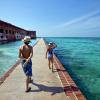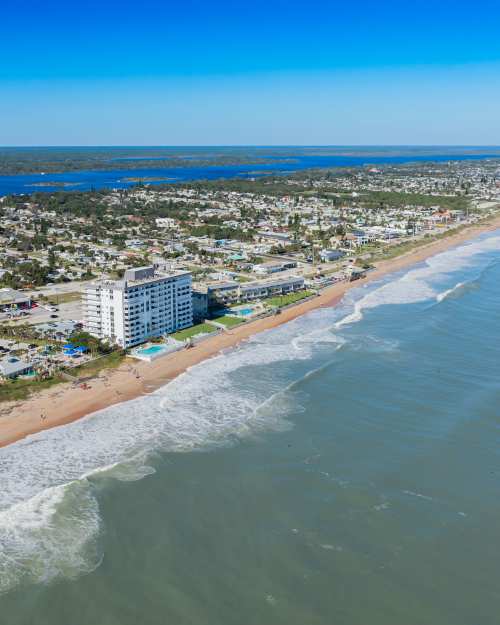Ormond Beach
Just north of the excitement and activity of Daytona Beach, Ormond Beach has the feel of a smaller beach town where visitors can relax and enjoy the seaside atmosphere along with state and local parks, cultural sites, art galleries, and more.
Kayak, surf, rent a boat, or take a dip in the Atlantic Ocean. For a day of outdoor adventure away from the beach, the city’s Central Park has 150 lush acres to explore with its trails and waterways.
Drive the 30-mile Ormond Scenic Loop and Trail, see the winter home of John D. Rockefeller, now The Casements cultural center, and explore the shops of Fountain Square Village on Granada Boulevard.
For dinner, stop in for a seaside feast at The Beach Bucket Bar and Grill.
Visit Daytona Beach Area Convention & Visitors Bureau to plan your stay.
BEACHES
Access the beach at a four-acre public park with concessions, restrooms, and pavilions.
FAMILY FUN
Families with children will enjoy the beachfront park’s playground and splash pad as well as kid-friendly activities, such as Free Family Art Night at Ormond Memorial Art Museum & Gardens.
- Andy Romano Beachfront Park playground and splash pad
- Ormond Memorial Art Museum & Gardens
- Surfari Surf School surf lessons and camp
MUSEUMS, ARTS & ENTERTAINMENT
Explore the arts district, see a show at the performing arts center, and walk the art museum and gardens.
- Ormond Memorial Art Museum & Gardens
- Ormond Beach Performing Arts Center
- Ormond Beach Arts District
- Galleries
- The Casements cultural center
OUTDOOR ADVENTURES
Off the beach, explore miles of scenic trails on foot or by bike at state parks that offer ample opportunities for camping, hiking, biking, birding, and paddling.
ACCESSIBILITY
Beach wheelchairs are available to use free of charge on a first-come, first-served basis, and the performing arts center offers wheelchair seating.
- Beach wheelchairs
- Ormond Beach Performing Arts Center accessibility
DINING
Eat seafood across from the beach, relax in a cozy cafe, or go for a food tour to sample the local fare.
- Fun Coast Food Tours
- Charlie Horse Restaurant
- Jimmy Hula’s Food Nirvana Ormond Beach
- Pines to Palms Cafe
- More restaurants
SHOPPING
Get fresh produce and goods from the farmers market, browse boutiques, and look for antique treasures around Ormond Beach.
- Pink Beach Boutique
- Ormond Beach Farmers Market
- Fountain Square Village
- Dunn’s Attic and Auction House
- More shops
SPORTS
Great weather and beautiful scenery make golf and tennis popular sports in Ormond Beach.
PLACES TO STAY
From campgrounds to beachfront resorts, there are many ways to stay in Ormond Beach.
60 Seconds in New Smyrna Beach, Ormond Beach, and Deland
Quick Facts
Quiet resorts near of Daytona Beach
Nearest Airport
ORMOND BEACH BUSINESS LISTINGS
Nearby Cities
RELATED CONTENT
Where to Eat Oceanside in Flagler Beach
- 6 minute read
From caffeine to sweets, these restaurants in Flagler Beach have it - with an added dash of the ocean. By Denise Maloof Yowling stomachs and yowling...




























